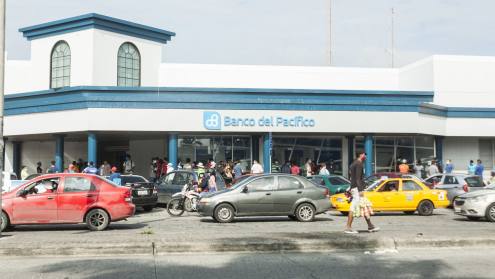China’s dominance at the top of the Top 1000 World Banks ranking had seen little change in 2021, with the same four banks – Industrial and Commercial Bank of China (ICBC), China Construction Bank (CCB), Agricultural Bank of China and Bank of China – holding onto their places for another year thanks to strong growth in Tier 1 capital. But a deep dive into the performance of the country’s banks shows there is growing strength among the smaller, regional institutions.
China has weathered the pandemic well, as strict lockdown measures implemented in March 2020 prevented the virus from spreading and allowed the economy to return to growth, at a time when many other countries continued to struggle. The country’s banks were also assisted by a financial support regime from the People’s Bank of China, which stepped in with credit lines, while earlier steps to build up loan-loss reserve buffers paid off.
Against this backdrop, many of the country’s smaller institutions have performed well in the 2021 best-performing analysis, which was run against 98 of the largest 100 locally owned banks by Tier 1 capital. (The best-performing methodology could not be applied to WeBank, as a full dataset was not available; nor Mengshang Bank (Mongolia Commercial Bank), as it is a new bank with one year of financials only.)
CMB is the only institution to boast a place in the top 10s of both the domestic ranking by Tier 1 capital and the overall best-performing table
For example, Shandong province-based commercial lender, Hengfeng Bank, which placed 25th in the domestic bank ranking and 135th in the Top 1000 World Banks ranking, comes out on top this year for overall performance, ousting Foshan Rural Commercial Bank, which dropped to third place. Hengfeng Bank has taken the top spot for profitability and tied for first place with China Merchants Bank (CMB) in the return on risk metric.
Other notable results for Hengfeng Bank are top-10 placings in growth, operational efficiency, soundness and leverage. However, there is clear room for improvement for asset quality and liquidity, where the bank placed 39th and 85th respectively. It is a turnaround in fortunes for a bank which underwent restructuring and received Rmb100bn ($15.5bn) in strategic investment at the start of 2020.
CMB is the only institution to boast a place in the top 10s of both the domestic ranking by Tier 1 capital, coming in sixth, and the overall best-performing table, placing second. While the bank came in first when measured against the other top-10 banks, its strengths and weaknesses are underlined when compared with a larger cohort.
The lender takes the first place for return on risk and second for profitability, but only placed 53rd for growth and 65th for operational efficiency. Although CMB came first for liquidity, soundness and leverage when measured against the other top-10 banks, it comes in 19th, 13th and 12th respectively when weighed against the broader domestic group.
Looking at the results of China’s two largest state-owned banks, ICBC, which held onto the top spot in the Top 1000 World Banks ranking, took joint 19th place in the best-performing table alongside Bank of Zhengzhou, which places 38th in the domestic ranking. ICBC’s highest placing was third for return on risk and eighth in profitability; however, it placed 70th in the growth category. CCB, which placed second in the Top 1000 World Banks ranking, sits in 26th place in the overall table, after coming in third for return on risk and fifth for profitability. CCB’s weakest performance is in the growth and liquidity metrics, where it places 60th in both.













